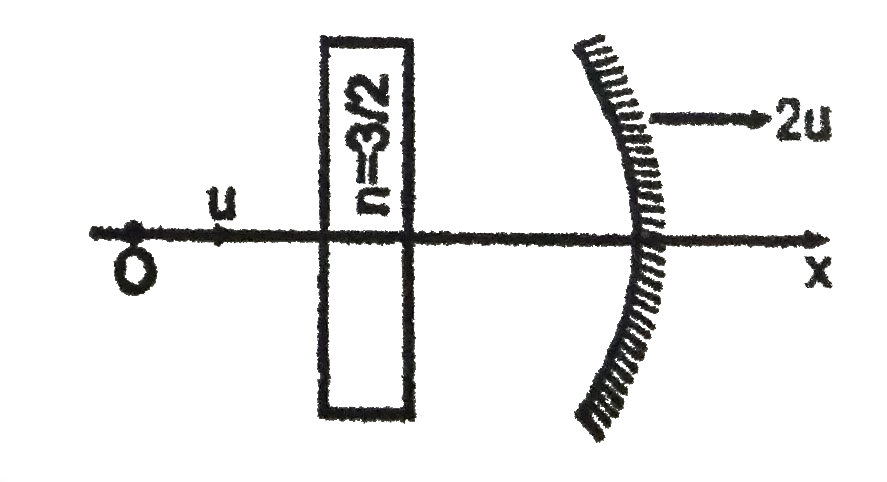The angular magnification of a system is less than one. Does it mean that the image formed is inverted?
To determine whether an angular magnification of less than one implies that the image formed is inverted, let's analyze the situation step by step.
Step 1: Understand Angular Magnification
Angular magnification (M) is defined as the ratio of the angle subtended by the image (β) at the eye to the angle subtended by the object (α) at the unaided eye. Mathematically, it is expressed as:
M=βα
Step 2: Analyze the Condition M < 1
When the angular magnification is less than one (M < 1), it indicates that the angle subtended by the image (β) is smaller than the angle subtended by the object (α). This means that the image appears smaller than the object when viewed through the optical system.
Step 3: Determine Image Orientation
The orientation of the image (whether it is inverted or upright) is not directly determined by the value of angular magnification. The angular magnification being less than one indicates a reduction in size, but it does not provide information about the orientation of the image.
Step 4: Conclusion
Therefore, an angular magnification of less than one does not imply that the image formed is inverted. The image could be either upright or inverted; the key point is that it is smaller than the object.
Final Answer
No, the angular magnification of a system being less than one does not mean that the image formed is inverted.
---
Angular magnification (M) is defined as the ratio of the angle subtended by the image (β) at the eye to the angle subtended by the object (α) at the unaided eye. Mathematically, it is expressed as:
When the angular magnification is less than one (M < 1), it indicates that the angle subtended by the image (β) is smaller than the angle subtended by the object (α). This means that the image appears smaller than the object when viewed through the optical system.
The orientation of the image (whether it is inverted or upright) is not directly determined by the value of angular magnification. The angular magnification being less than one indicates a reduction in size, but it does not provide information about the orientation of the image.
Therefore, an angular magnification of less than one does not imply that the image formed is inverted. The image could be either upright or inverted; the key point is that it is smaller than the object.
No, the angular magnification of a system being less than one does not mean that the image formed is inverted.
Topper's Solved these Questions
- OPTICAL INSTRUMENTSBOOK - HC VERMA ENGLISHCHAPTER - OPTICAL INSTRUMENTSEXERCISE - Exercises
23 Videos
- MAGNETIC PROPERTIES OF MATTERBOOK - HC VERMA ENGLISHCHAPTER - MAGNETIC PROPERTIES OF MATTEREXERCISE - Short Answer
6 Videos
- PERMANENT MAGNETSBOOK - HC VERMA ENGLISHCHAPTER - PERMANENT MAGNETSEXERCISE - Short Answer
11 Videos
Similar Questions
RQ is less than one for
View Solutionsubstance whose RQ is less than one is
View SolutionAn astronomical telescope has an eyepiece of focal-length 5cm. If the angular magnification in normal adjustment is 10, when final image is at least distance of distinct vision (25cm) from eye piece, then angular magnification will be :
View SolutionTo increase the angular magnification of a simple microscope, one should increase
View SolutionThe magnification power of a convex lens of focal length 10cm, when the image is formed at the near point is
View SolutionFor the system as shown in the figure, the image formed by the concave mirror

View SolutionAn object is seen through a simple microscope of focal length 12 cm. Find the angular magnification produced if the image is formed at the near point of the eye which is 25 cm away from it.
View SolutionAn astronomical telescope is adjusted to form the final image at infinity. The separation between the lenses is 80 cm. The angular magnification is 15. Calculate the focal lengths of the objective lens and the eyepiece.
View SolutionAn astronomical telescope has an angular magnification of magnitude 5 for distant object. The separation between the objective and eyepiece is 36cm and the final image is formed at infinity. Determine the focal length of objective and eyepiece.
View SolutionA convex lens is placed between an object and a screen which are at a fixed distance apart for one position of the lens. The magnification of the image obtained on the screen is m1. When the lens is moved by a distance d the magnification of the image obtained on the same screen m2, Find the focal length of the lens.
View Solution
